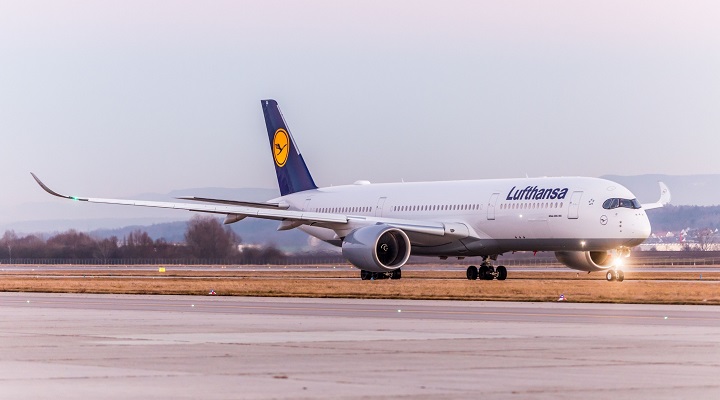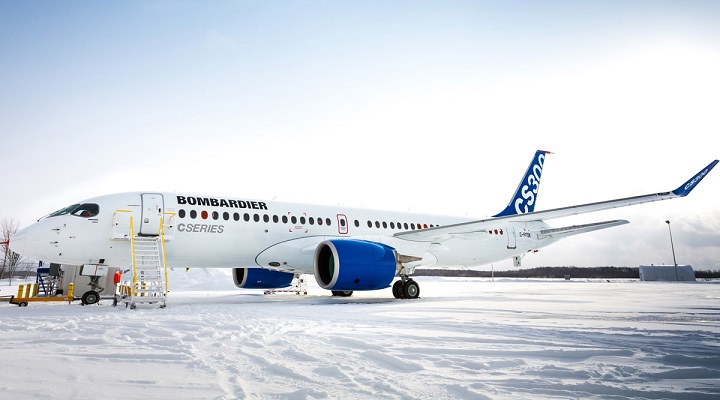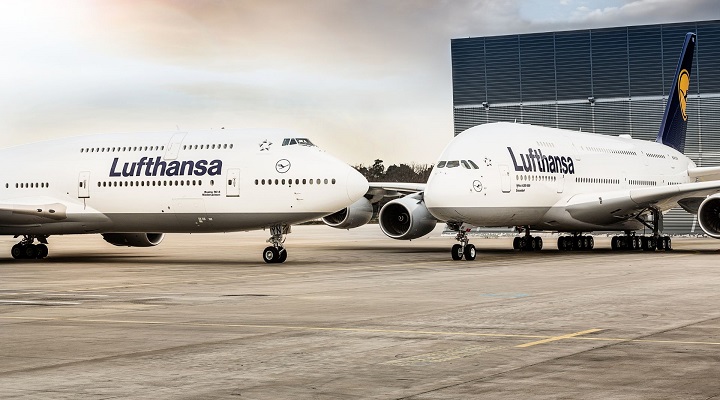The airlines of the Lufthansa Group welcomed around 12.7 million passengers in September 2017.
This shows an increase of 17.8% compared to the previous year’s month. The available seat kilometers were up 11% over the previous year, at the same time, sales increased by 12.9%. The seat load factor improved accordingly, rising 1.4 percentage points compared to September 2016 to 83.8%. In the first nine months of the year, around 98.4 million passengers were transported, 17.5% more than in the first nine months of 2016. Overall, the Lufthansa Group carried more passengers than ever before in the first nine months of 2017. The seat load factor has reached a historical peak of 81.4%. The figure was 2.1 percentage points higher than in the previous year.
The currency adjusted pricing environment in September was again positive.
Cargo capacity increased 1.9% year-on-year, while cargo sales were up 6% in revenue tonne-kilometer terms. As a result, the Cargo load factor showed a corresponding improvement, rising 2.7 percentage points in the month. Overall, the cargo capacity in the first nine months of 2017 was 2.7% higher than in the previous year. At the same time, cargo sales in this period increased by 8%, resulting in a load factor of 3.4 higher percentage points.
Network Airlines
The Network Airlines Lufthansa German Airlines, SWISS and Austrian Airlines carried 9.3 million passengers in September, 5.1% more than in the prior-year period. Compared to the previous year, the available seat kilometers increased by 1.1% in September although the number of flights was reduced by 0.8%. The sales volume was up 2.9% over the same period, raising seat load factor by 1.5 percentage points to 83.7%. In the first nine months of the year, the Network Airlines carried 73.9 million passengers and therefore 5.8% more than in the same period of the previous year. During this period, the seat load factor for Network Airlines increased by 2.3 percentage points to 81.6%.
Lufthansa German Airlines transported 6.3 million passengers in September, a 4.2% increase compared to the same month last year. A 0.4% decrease in seat kilometers in September was still a 1.9% increase in sales. Furthermore, the seat load factor was up to 84.6%, therefore 1.9 percentage points above the prior-year’s level. In the first nine months of 2017, Lufthansa German Airlines carried 50.1 million passengers, 4.4% more than in the same period of the previous year. At 82%, the seat load factor was 2.7 percentage points higher than in the first nine months of 2016.
Point-to-Point Airlines
The Lufthansa Group’s Point-to-Point Airlines – Eurowings (including Germanwings) and Brussels Airlines – carried around 3.4 million passengers in September. Among this total, 3.1 million passengers were on short-haul flights and 220,000 flew long-haul. This amounts to an increase of 77.3% in comparison to the previous year. September capacity was 107.2% above its prior-year level, while its sales volume was up 108.4%, resulting in a slightly increased seat load factor which was 0.5 percentage points higher.
On short-haul services the Point-to-Point Airlines raised capacity 69.3% and increased sales volume by 75.4%, resulting in a 3.0 percentage points increase in seat load factor of 85.6%, compared to September 2016. The seat load factor for the long-haul services decreased 8.8 percentage points to 80.9% during the same period, following a 329.5% increase in capacity and a 287.2% rise in sales volume, compared to the previous year. The number of passengers on long haul flights of the Point-to-Point Airlines in September was around 4.5 times higher than one year before.
The Point-to-Point Airlines carried a total of 24.5 million passengers in the first nine months of the year, 75.8% more than in the same period of the previous year. At 80.3%, the seat load factor was 0.3 percentage points higher than in the previous year.






